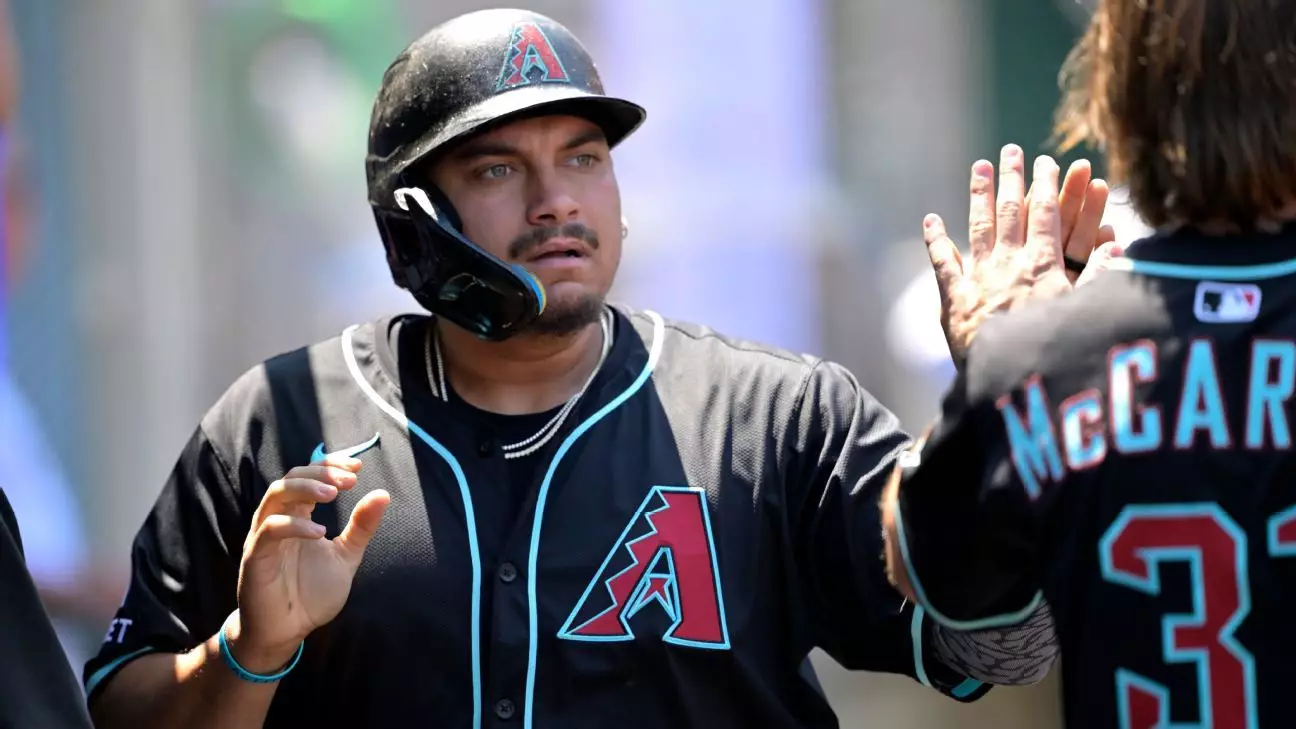In a bold statement of intent just as the trade deadline heats up, the Seattle Mariners have initiated a significant move by acquiring first baseman Josh Naylor from the Arizona Diamondbacks. This transaction signals a shift in the Mariners’ strategic vision—favoring targeted, impactful additions over hollow prospect swaps. Rather than relying solely on their revered farm system, which boasts one of the most promising collections in baseball, Seattle is clearly committed to making a playoff push this season.
This trade exemplifies a broader trend among competitive teams: the willingness to leverage established major league talent and specific mid-tier assets to accelerate postseason aspirations. The Mariners, by bringing in Naylor—a player with a proven track record of clutch hitting and power—are prioritizing immediate contribution over long-term rebuilding. Their decision underscores an understanding that winning now can bolster franchise expectations and galvanize their fanbase, especially after missing out on the playoffs in recent seasons.
What’s particularly revealing is the Mariners’ restraint in not dipping into their top-tier prospects—such as Colt Emerson or Jonny Farmelo—as many other contenders might. Instead, they opted for more flexible assets like prospects Brandyn Garcia and Ashton Izzi, who offer ceiling potential but are not yet core pieces. This suggests a calibrated risk-taking approach, balancing immediate needs against future potential, and reflects a broader philosophical shift in how teams view prospects versus proven commodities.
Arizona’s Market Strategy: Rebuilding Through Trade Flexibility
Meanwhile, the Arizona Diamondbacks’ approach to the trade deadline highlights a different organizational philosophy—one that is open and opportunistic. With a core of talented players like Corbin Carroll, Ketel Marte, and Geraldo Perdomo, Arizona remains competitive at the major league level but recognizes the inevitable turnover looming on the horizon, particularly with impending free agents such as Zack Gallen, Merrill Kelly, and Eugenio Suarez.
Arizona’s willingness to entertain offers on high-value veterans signifies their acknowledgment of the team’s current positioning. The Diamondbacks are aiming to maximize value—possibly moving players who could be key pieces for contending teams—while also bolstering their own prospects and roster flexibility for future seasons. This open stance allows Arizona to capitalize on speculative bidding wars, especially for pitchers like Kelly and Gallen, who could fetch substantial returns in a surging trade environment.
Additionally, acquiring Naylor from Cleveland last winter was a smart move for the Diamondbacks—adding a reliable slugger with a low strikeout rate and solid power. As the season unfolds, their focus appears to be on maintaining flexibility for a potential rebuild while simultaneously keeping their competitive window open. This nuance underscores an organization that values the art of balancing short-term competitiveness with long-term strategic planning.
The Broader Implications for Baseball’s Power Dynamics
This exchange between Seattle and Arizona reflects a more significant evolution within Major League Baseball’s power structure. Teams are increasingly discerning about when and how to leverage their assets, understanding that the trade deadline is a moment for calculated aggression—neither reckless nor overly conservative. The Mariners’ move to acquire Naylor demonstrates a readiness to pursue immediate gains, trusting their roster’s strength and their scouting department to supplement their strengths.
Arizona’s more measured stance, on the other hand, underscores a recognition that the landscape is shifting toward a rebuilding emphasis that still respects the value of current contributors. With their core intact and a flexible trade market, the Diamondbacks seem poised to navigate the deadline with a focus on maximizing value rather than merely chasing a fleeting playoff spot.
These contrasting philosophies showcase the diversity of strategic thinking in baseball today. It’s no longer just about building for tomorrow or winning immediately; it’s about striking a delicate balance that depends on the organization’s current competitive status, long-term vision, and market dynamics.
What these teams reveal is a game evolving into a chess match of tactical brilliance. Whether it’s Seattle’s calculated risk to add a proven slugger or Arizona’s open-ended blueprint to maximize roster flexibility, there’s a clear shift toward nuanced decision-making informed by analytics, market signals, and organizational identity.
Going forward, observing how these moves resonate through the rest of the season will be illuminating. Will the Mariners solidify their postseason spot with Naylor’s power bat? Will Arizona’s openness to trading key players fuel a deeper rebuild or set them up for a future surge? One thing remains certain: the trade deadline has become a dynamic arena where calculated risks, strategic patience, and bold moves intertwine—a reflection of baseball’s evolving competitive landscape and its relentless pursuit of greatness.


Leave a Reply